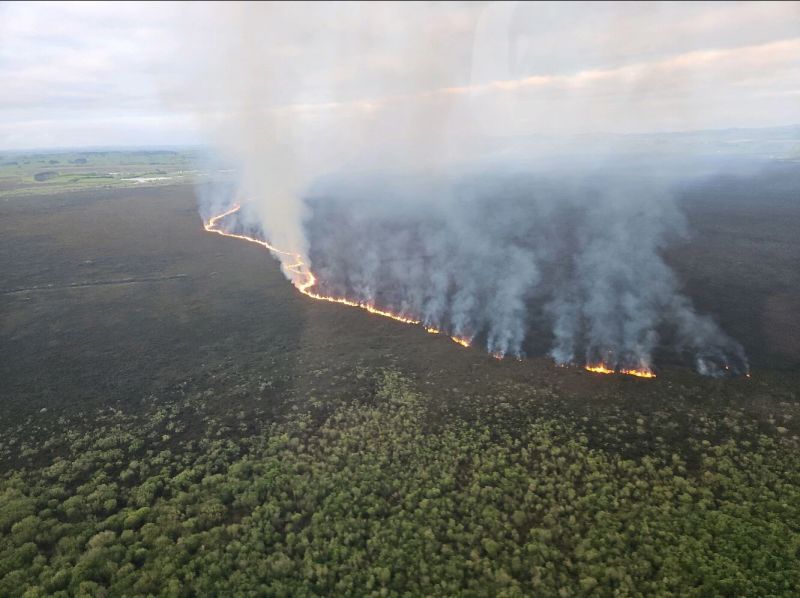A massive fire is ripping through a protected wetland in New Zealand, threatening its delicate ecosystem and the rare species that live there – some found nowhere else on Earth.
The blaze at the Waikato wetland on the country’s North Island is 15 kilometers (nearly 10 miles) in perimeter and has burned more than 2,471 acres (1,000 hectares) since it began on Monday, authorities said, as they warned it could take days to bring under control.
Experts have also warned of the potential damage to what is one of New Zealand’s largest carbon sinks – environments, such as oceans and forests, that remove more carbon dioxide from the atmosphere than they contribute, and are critical to slowing global warming and other impacts of the climate crisis.
About 50 firefighters are working alongside helicopters and airplanes at the site south of Auckland, the country’s largest city, according to Fire and Emergency New Zealand (FENZ). There is no immediate danger to residents and businesses in the area, authorities said.
“This is a large fire and it could take some days to bring it under control properly,” said Incident Controller Mark Tinworth in a news release on Wednesday.
The presence of peat – the accumulation of dead and slowly decaying plant material common across bogs and wetland – had made the fire “particularly challenging,” as it can burn underground and can be hard to find and extinguish, he added.
The blaze poses a major risk to the wetland ecosystem, an important habitat that’s found in few other places, experts say. The wetland is a patchwork of swamps, bogs, marshes and open water surrounding two rivers – designated as one of three nationally significant sites in the government’s wetlands restoration program.
Part of the Ramsar List, an international treaty that aims to protect important wetlands, it’s also a breeding site for threatened bird species.
The wetland is also home to various other rare fish and plants, he added, such as the endangered swamp helmet orchid – which isn’t found anywhere else in the world.
Fragile ecosystem
It’s not yet clear where or how the fire started, and investigators are on the scene to determine its origin.
But even before the blaze, the Waikato wetland, like many other unique habitats in New Zealand, was at risk due to environmental degradation and the climate crisis.
It has been “dramatically changed” over the years due to human land use, increased flooding, and the introduction of non-native species, according to the Department of Conservation – damaging the ecosystem’s health and its ability to perform crucial functions.
The wetland is a type of raised peat bog – a “very rare habitat” and “one of the few remaining in the southern hemisphere,” Jones, from the department, told RNZ.
Carbon sinks are critical to slowing global warming and other impacts of the climate crisis; for instance, the Amazon rainforest, long known as the “lungs” of the planet, holds the equivalent of 15 to 20 years of the entire world’s global carbon stores.
But when these carbon sinks come under threat, that stored carbon can be released back into the environment. The Amazon is already beginning to collapse and is now releasing more carbon than it absorbs, mainly because of forest fires and logging.
As the fire burns it’s too soon to assess the extent of its damage or impact on the ecosystem, Jones told RNZ. However, he added, “this fire will be releasing some of the stored carbon back into the environment.”
There are other challenges too – authorities warned members of the public not to fly drones near the fire on Wednesday after the sighting of one forced firefighters to temporarily halt operations, due to the risk of a mid-air collision.
“This is a really beautiful part of the country with considerable environmental value, and we’re doing our best to prevent it from being destroyed,” FENZ’s Tinworth said in a separate release on Tuesday.

